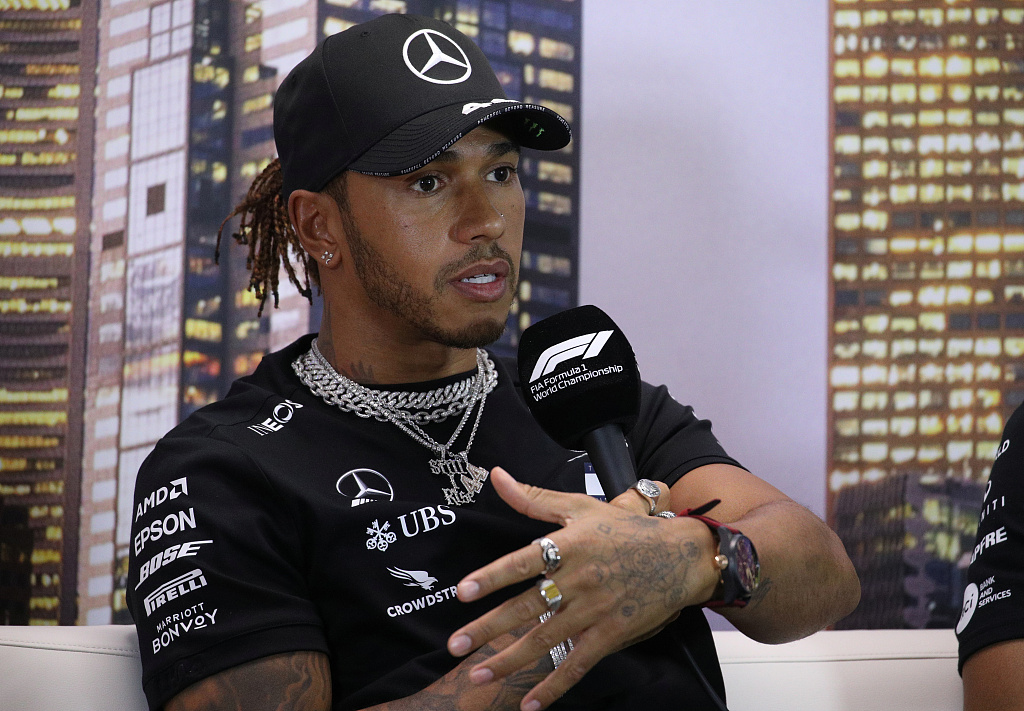
In the high-octane world of Formula 1, where milliseconds can separate victory from defeat, the Baku Grand Prix has always stood out as a thrilling spectacle. With its mix of long straights and tight corners, the Baku City Circuit often proves to be a test of both driver skill and car performance. For Mercedes-AMG Petronas Formula One Team, the 2024 Azerbaijan Grand Prix promised to be a significant challenge, as they sought to secure a front-row start and, ultimately, a podium finish. However, Lewis Hamilton’s recent revelation regarding an issue that cost Mercedes the front row at Baku provides a deep dive into the complexities and challenges faced by teams in this high-stakes environment.

The Context: Baku’s Demanding Circuit
The Baku City Circuit, a favorite among fans and drivers alike, is renowned for its unique blend of characteristics. The track features a lengthy main straight, which favors cars with high straight-line speed, coupled with a series of tight corners and a narrow layout that can lead to dramatic changes in position and numerous overtaking opportunities. These attributes make it a venue where qualifying performance is crucial, as starting positions can heavily influence race outcomes.
Mercedes’ Performance at Baku
For the Mercedes team, the 2024 Baku Grand Prix was a significant opportunity to showcase their competitive edge. Historically, Mercedes has excelled on tracks with long straights and high-speed sections, thanks to their superior aerodynamic efficiency and powerful engines. However, the Baku circuit’s challenging layout posed a unique set of problems that required meticulous preparation and precision engineering.
Hamilton’s Revelation: The Issue Unveiled
In the aftermath of the qualifying sessions, Lewis Hamilton revealed a critical issue that impacted Mercedes’ ability to secure a front-row start. The problem, as Hamilton explained, was a combination of technical difficulties and strategic missteps that ultimately hampered their performance.
1. Aero Efficiency and Balance Issues
Hamilton pointed out that the primary issue was related to aerodynamic balance. The Baku circuit, with its fast corners and long straights, demands an optimal aerodynamic setup. Mercedes, known for its cutting-edge aero technology, had encountered unexpected problems with the car’s balance during the qualifying sessions. The car, which had shown promising pace in practice, struggled with understeer and instability in high-speed corners.
The issue was traced back to the aerodynamic adjustments made in the lead-up to qualifying. A specific component, likely related to the car’s front wing or diffuser, did not perform as expected. This miscalculation meant that the car’s front end was less responsive, leading to compromised cornering speed and reduced overall grip. As a result, Hamilton was unable to extract the maximum performance from the car, which ultimately cost them valuable time on track.
2. Power Unit Performance
Another significant factor was related to the power unit. Mercedes had introduced a new specification of their power unit for the Baku race, aiming to improve performance and reliability. However, during qualifying, Hamilton reported issues with power delivery, which affected the car’s straight-line speed. Despite the engine’s potential, it did not deliver the expected performance, leading to a loss of crucial tenths of a second on the straights.
This issue was compounded by the fact that Baku’s long straights are particularly demanding on the power unit. Any shortfall in performance here is magnified, making it more difficult to compete at the front. The combination of aerodynamic and power unit issues meant that Mercedes was unable to match the pace of their rivals, especially those who had nailed their setups and power units for the unique challenges of the Baku circuit.
3. Strategic Decisions and Timing
Hamilton also shed light on the strategic decisions made during qualifying. The team’s decision to optimize their setup for the longer run in Q3, rather than focusing solely on a single flying lap, was a tactical choice that did not pay off as expected. The balance between maximizing single-lap performance and ensuring the car was competitive over longer runs was a tricky one, and Mercedes’ choice to focus on the latter meant they may have missed out on the absolute peak of performance for a single qualifying lap.
In addition, the timing of their runs during the qualifying session played a role. The Baku circuit’s conditions can change rapidly, and the timing of Hamilton’s runs was affected by traffic and track evolution. With many cars on track at once, finding clear air and a clean lap became increasingly difficult, further impacting their qualifying performance.
The Impact and Looking Ahead
Hamilton’s revelation highlights the intricate and often unpredictable nature of Formula 1. Despite Mercedes’ advanced technology and resources, the challenges presented by a unique circuit like Baku can disrupt even the best-laid plans. The combination of aerodynamic issues, power unit performance, and strategic decisions created a scenario where Mercedes was unable to secure a front-row start.
The impact of this setback was significant. Starting from a lower position on the grid at Baku, where overtaking is challenging but possible, meant that Mercedes had to adopt a different race strategy. The team had to be adaptable and focus on maximizing their race pace and making strategic pit stops to recover positions.
Looking ahead, the team will undoubtedly analyze the issues faced in Baku thoroughly. Lessons learned from this experience will be applied to future races, as they aim to refine their setups, improve their power unit performance, and optimize their strategic approaches. Mercedes remains a formidable competitor in the championship, and overcoming challenges like these is part of their ongoing quest for excellence.
In conclusion, Lewis Hamilton’s insights into the issues that cost Mercedes the front row at Baku provide a valuable perspective on the complexities of Formula 1 racing. The combination of technical difficulties, strategic decisions, and the challenging nature of the Baku circuit created a perfect storm that impacted their qualifying performance. However, as always in Formula 1, resilience and adaptation will be key as Mercedes continues their pursuit of success throughout the season.

Leave a Reply